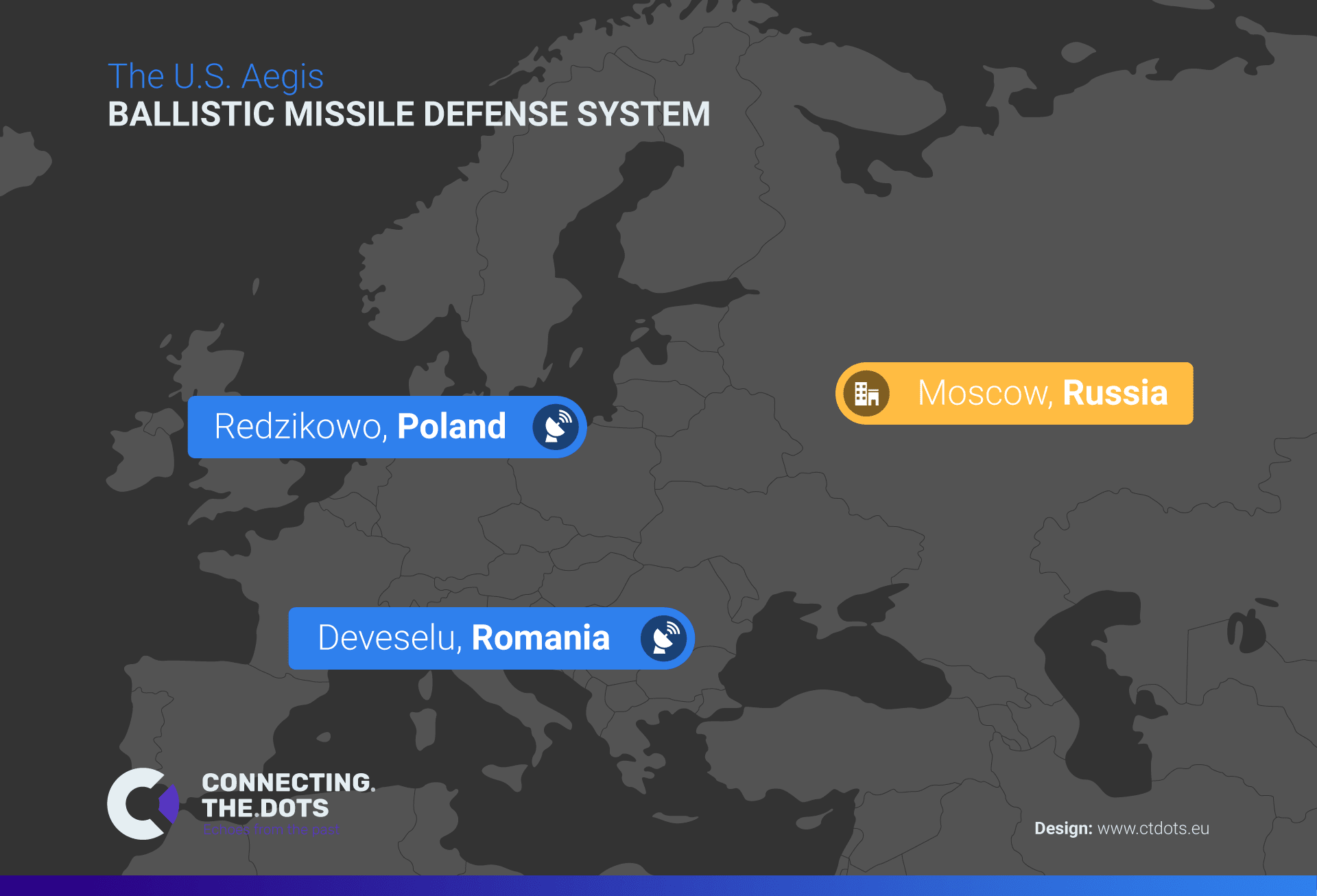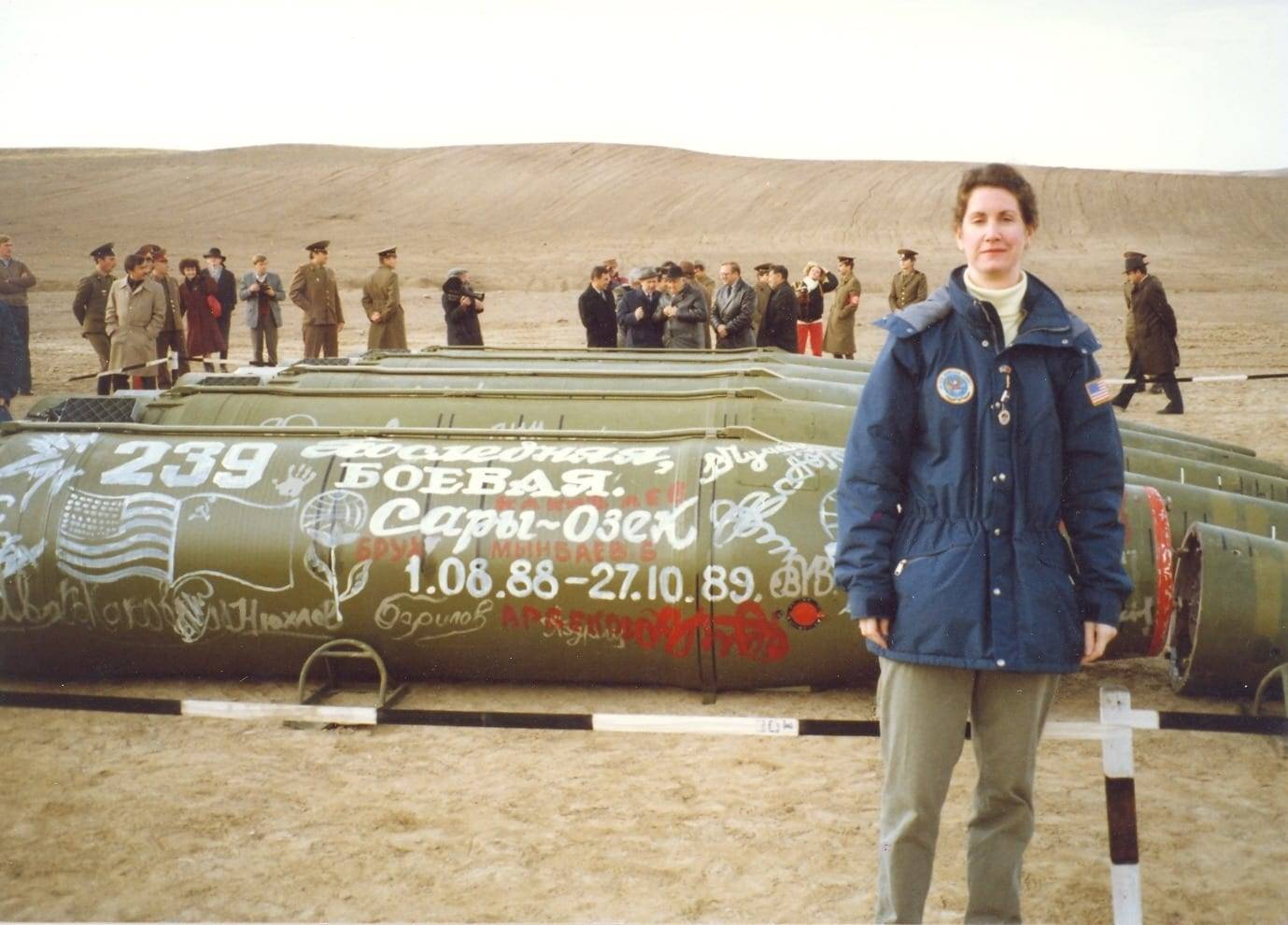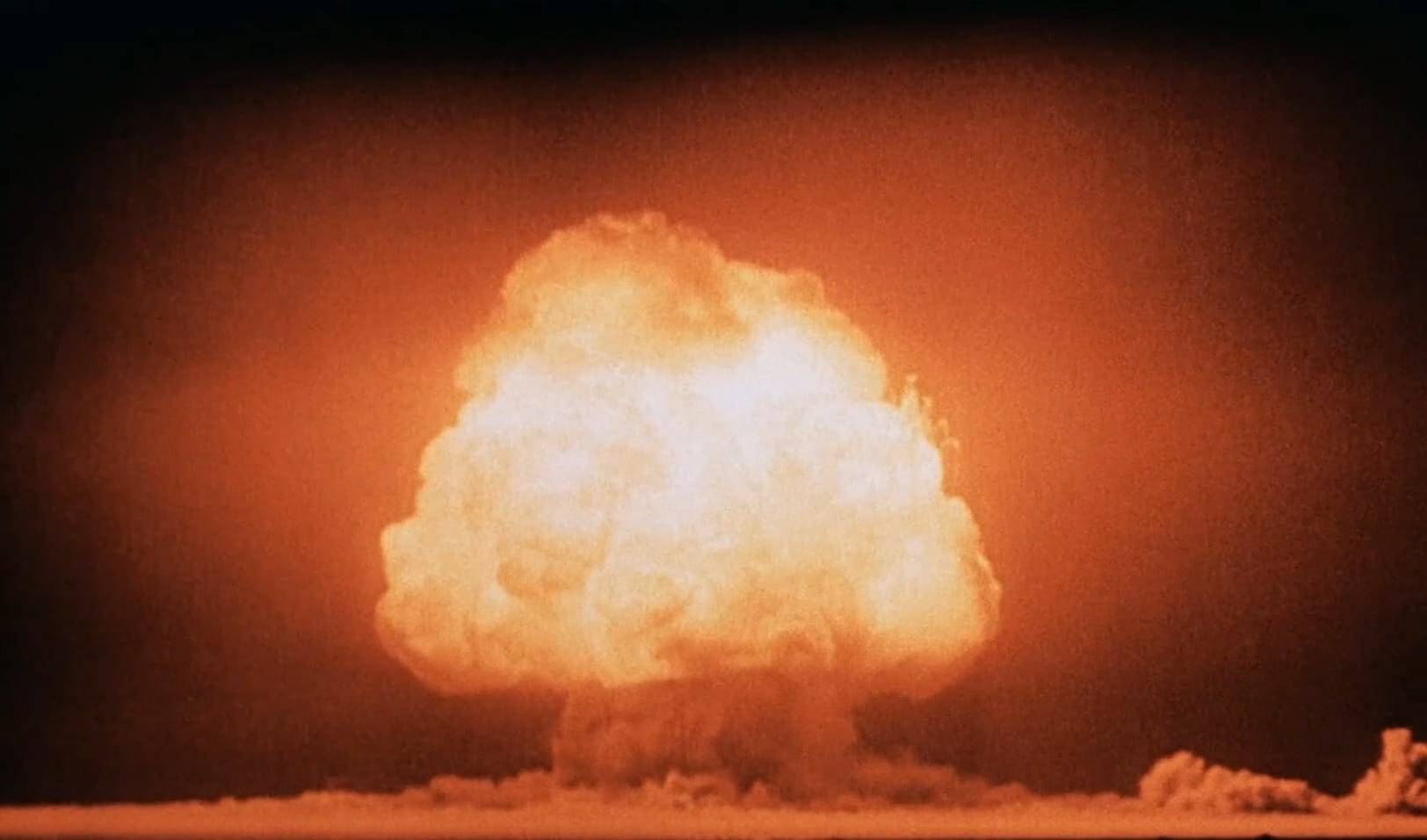February 20, 2019
What is the INF Treaty and who is to blame for its fall?
Geopolitics, History, Technology
Top attractions:
What is the INF Treaty?
Intermediate-Range Nuclear Forces Treaty, or better known as INF Treaty, or should be known as a mother flattering our head while we sleep in peace during the night, was a quintessential nuclear arms control accord reached by the United States and the Soviet Union in 1987 in which both sides agreed to destroy their arsenal of short to intermediate range (310 – 3,420 miles or 500 – 5,500 km) land-based missiles capable of carrying nuclear warheads. It was the first agreement on which both sides agreed to destroy the entire arsenal of certain weapon systems. These type of missiles could carry a nuclear warhead to its target location in 10 minutes, totally annihilating it.
INF negotiations started in October 1980, just three years after the first RT-21Ms (SS-20s) were deployed in the Soviet Union. These intermediate missiles could strike any target in Western Europe in less than 10 minutes. Three years after negotiation start, under the pressure of its western European allies, the U.S. deployed two of their own intermediate-range weapon systems in Europe, which could strike Moscow in less than 10 minutes. Under the pressure of possible attack, INF Treaty was signed in Washington, D.C., on December 8, 1987, by the U.S. president Ronald Reagan and Soviet General Secretary Mikhail Gorbachev. It was ratified by the U.S. Senate and the Supreme Soviet the next year.

President Reagan and General Secretary Gorbachev signing the INF Treaty.
Source:Wiki
Why the U.S. withdrew from INF Treaty?
While a simple way of looking at it would be ‘the genius of Trump strikes again’, the actual situation is way more complicated. In 2014 the Obama administration publicly accused Russia of violating the agreement. Washington has issued many warnings to Moscow ever since, asking them to stop violating the arms control agreement. The U.S. accused Russia of developing 9M729 missile or better known as SSC-8 by the U.S., a cruise missile with a reported range between 310 and 3,420 miles (500 – 5,500 km), and of missile deployment to Southern Russia. The missile is larger and has a better guidance system than its predecessor 9M728, a.k.a Iskander-K, a.k.a. SSC-7, but as Russian Missile and Artillery Force Lieutenant-General Mikhail Matveyevsky said, has a lesser range than 310 miles, while the older version could reach bigger ranges than it is allowed by the INF Treaty. With the official excuses of the Russians, given that they are lying, the U.S. had only two options left: either to quit the treaty or to show their intel to the public.
The U.S. has been trying to get Russia to return to compliance with the INF treaty since 2013. We have been engaging with them for five years, and we made no progress whatsoever. – Frank Rose, Assistant secretary of state of arms control under former President Obama.
The second concern is that the treaty only includes two nations. As John R. Bolton, National Security Advisor of the United States said – the INF Treaty is a Cold War relic and it should be replaced by a modern one, and most importantly the negotiations should not be held only between the U.S. and Russia but include another modern superpower China. While it is a real issue, this might just be an excuse to implement more aggressive policies towards Russia and China, as the U.S. probably thinks that they have a superior military and all those treaties just handicap them and are more beneficial to their enemies than to the U.S.
There is a new strategic reality out there. This is a Cold War, a bilateral ballistic missile-related treaty in a multipolar ballistic missile world. – John R. Bolton
It is no secret that ever since the end of World War II, the U.S. foreign policy resulted in plenty of enemies. It is in their best interest that treaties should either include other opposing powers or, at least, not to restrict them. Meanwhile, the INF Treaty included only the U.S. and the countries, which after the collapse of the Soviet Union remained with a nuclear arsenal: Russia, Belarus, Ukraine, and Kazakhstan. While Russia remains not a friendly state to the U.S., Washington has also to worry about North Korea, Iran, and even possible future conflicts with China. There are only two logical strategical options left for the U.S., they must either seek including everybody to the arms control treaties or simply try to outgun all of their enemies, which would please the U.S. military lobbyists as well. It is hard to see what are the true motives behind quitting the INF Treaty, but the official statement from Donald Trump, the President of the United States was:
Until people come to their senses, we will build it up. It is a threat to whoever you want. And it includes China. And it includes Russia. And it includes anybody else that wants to play that game.

Aegis Ashore Missile Defence Complex, Romania. Commander, U.S. Naval Forces Europe-Africa/U.S. 6th Fleet [Public domain]
Why Russia withdrew from the INF Treaty
It is easy to say that Russia left the INF Treaty because Donald Trump announced that the U.S. will not restrict themselves by the Treaty and will withdraw from it if Russia won’t come to compliance in six months. Everything is always more complicated than this. There is a deeper layer to the reason why Moscow acted the way they did.
The relationship regarding the treaties between the U.S. and Russia started crumbling after the 9.11 attacks. The President of the United States, George W. Bush withdrew the country from the ABM Treaty in order to build better protection from the third parties and possible future similar terrorist attacks. The main purpose of the ABM treaty was to limit the defence against the incoming missiles, carrying nuclear weapons, to increase the fear of a possible nuclear war. It was created to main mutual assured destruction policy, which meant that a nuclear attack would end-up with the annihilation of both sides.
Later on, the U.S. of constructed Aegis Ashore missile defence sites in Romania and Poland, which uses the same launch pads as U.S. Navy destroyers use to launch cruise missile BGM-109 Tomahawk whose land version is banned by the INF Treaty. The United States officials defended that they did so to protect themselves and their allies from other countries outside the Treaty and that the land-based variation does not possess the capability of launching these missiles. To Russia, it made no sense, but they were in no position to oppose the U.S.

Both, the U.S. withdrawal from the ABM Treaty and construction of the Aegis Ashore missile defence system raised serious questions to Russia’s security. The public display of a hypersonic cruise missile, capable of avoiding any defensive systems, was a way for Moscow to show that Russia is a technologically advanced country and that the U.S. has to recognize it and respect it’s positions when it comes to diplomacy.
Even though the President of Russia, Vladimir Putin forbid Russian diplomats to initiate the arms control talks, Russia seems to remain open for proposals. This was told on February 7th, during the news conference in Moscow by Deputy Foreign Minister Sergei Ryabkov:
We, of course, saw the reference in president Trump’s statement to the possibility of a new treaty that could be signed in a beautiful room and that this treaty should also include other countries as its participants.
While the U.S. would love to see China, Pakistan, North Korea, and even Iran in the treaty, it is not a secret that including more countries would benefit Russia even more, as Washington’s allies – France, the United Kingdom, and Israel have their own nuclear arsenal as well.

China reaction to the end of the INF Treaty
Having a fourth largest nuclear arsenal, China is often pointed out as a superpower outside an old treaty, therefore the U.S. uses it as an excuse for new talks and a treaty, including all parties. China’s foreign ministry insisted that both parties should focus on keeping the current agreements, instead of making new ones.
China is opposed to the US withdrawal and urges the US and Russia to properly resolve differences through constructive dialogue…
…What is imperative at the moment is to uphold and implement the existing treaty instead of creating a new one. China opposes the multilateralization of this treaty. – China’s foreign ministry
In 2015, China has deployed Dong-Feng 26 intermediate-range missiles, reaching 3,000 – 4,000 km, which can strike most of the U.S. bases in the Pacific Ocean. Even though the INF treaty doesn’t cover the intercontinental missiles, China’s military arsenal includes at least three systems capable of ranges up to 11,700 km, it could be included in future talks as well.

The aircraft carrier USS ENTERPRISE (CVN 65 ), the world’s first nuclear-powered aircraft carrier, steams alongside the smaller French aircraft carrier Charles De Gaul (R 91), in the Mediterranean Sea. U.S. Navy photo by Photographer’s Mate Airman Doug Pearlman. [Public domain]
NATO reaction to the U.S. pulling out of the INF Treaty
NATO officially expressed fully supporting the U.S. decision, though there were comments by Ally leaders criticizing the decision to force Russia into compliance by the INF Treaty itself instead of quitting it and, basically, playing the whole situation into Vladimir Putin’s hands.
NATO Secretary-General Gens Stoltenberg told that even though countries like China, India, Pakistan, and Iran that are developing intermediate-range missiles, which would be banned by the treaty, they must not abandon it. Quite the contrary, it should motivate both sides to push the other countries to join the treaty.
The U.S. excuse to their allies for their actions was given in the typical Trump—maybe-this-maybe-that-way:
We really have no choice, perhaps we can negotiate a different agreement, adding China and others, or perhaps we can’t – in which case, we will outspend and out-innovate all others by far.
Europe remains cautious and must wait for what is next. If the U.S. and Russia don’t solve their dispute in six months, it is possible that NATO has to step-in. As Peter Beyer, Germany’s trans-Atlantic coordinator said in the context of bringing Russia to compliance:
…but let us remain realistic: if that does not succeed, then America, then NATO must also position itself differently militarily in order to restore security in Europe.

Which country has a superior Nuclear arsenal?
Even though the deployed strategic nuclear weapons of both the U.S. and Russia are estimated to be equal at around 1,600 due to the New START Treaty, Russia has the biggest nuclear weapon arsenal in the world with a total inventory 6,850, with 4,350 of them are currently in the military stockpile. Nevertheless, the United States doesn’t fall far back behind them with a total of 6,450 warheads in their inventory and 3,800 in their military arsenal. Everybody else, including China, are far behind these two superpowers, their total nuclear arsenal includes following amounts of warheads: France – 300, China – 280, United Kingdom – 215, Pakistan – 150, India – 140, Israel 80 and North Korea – 20.
Despite the differences between these numbers, it doesn’t matter much as large numbers of nuclear warheads detonated are not required for a worldwide disaster. It is calculated that a local nuclear conflict with detonations of 100 Hiroshima’s “Little Boy” atomic bombs (~15 kilotons each) on major population centers, would cause a drop of temperature by several degrees in large areas of Eurasia and North America, ending up with a catastrophic result.
Other two conflicting atomic powers, Pakistan and India have tested nuclear warheads up to 45kt and 60kt accordingly, which with their given arsenal would be more than enough to cause a nuclear winter for a few years. After it, the increasing amount of greenhouse gases could trigger a nuclear summer for a way longer period, or even cause a run-away climate change, which would totally annihilate human civilization as we know it.

Ambassador Malloy Witnesses the Elimination of the Last Soviet Short-Range Missiles Under the INF Treaty. U.S. Department of State [Public domain]
What needs to be done
It might sound that banning short to intermediate range missiles is not as important as intercontinental ones, it is actually the opposite. The later is easier to defend against since there is more time to intercept them. The real threat lies in the missile systems next to their targets. Having arms control agreement like the INF Treaty is crucial for countries not to become paranoid like both sides were during the Cold War era.
While in order to maintain peace, both sides must demand the other side to follow the rules, the current tactics are way too hawkish and lack real diplomacy instead of just issuing ultimatums. The whole situation could be seen as consequences of election hacking scandal and all the issued sanctions against Russia due to various reasons, which resulted in a lack of communication between the two superpowers.
On the other hand, the talks have to be renewed and include all the parties possessing Atomic weapons, or intermediate-range missiles. It is hard for both the U.S. and Russia to stay idle while China and other states can do whatever they want. A new agreement has to be achieved one way or another soon, or it could pose a threat to renewing the New START Treaty in 2021, which limits the nuclear arsenal of both sides. Without it, nothing would limit the U.S. and Russia from arming up again, with China, most likely, joining them as well.

Trinity nuclear test, July 16, 1945. United States Department of Energy [Public domain]
Who is to blame for the fall of the INF Treaty?
Seeing how things are currently escalating, it is not the INF Treaty which is a Cold War relic, but the people who currently run the U.S. and Russian Governments. Comparing the anxiety of the Cold War to the ease of current times, it was the arms control agreements that made it possible. It is shocking how fast we forgot how fragile everything is. We are indeed, the species with amnesia, just some stray kids playing with fire without any guidance of Prometheus.
There is no point of looking who is to blame for the fall of the INF Treaty. If diplomacy is going to fail, everything is going to fail. America is not going to be great again; Russia won’t return as a force to be reckoned with; There would be no winners; The prophecy of the father of the atomic bomb will be fulfilled:
We knew the world would not be the same. A few people laughed… A few people cried… Most people were silent. I remembered the line from the Hindu scripture the Bhagavad Gita; Vishnu is trying to persuade the prince that he should do his duty, and to impress him takes on his multi-armed form, and says, “Now I am become death, the destroyer of worlds.” I suppose we all thought that, one way or another. – J. Robert Oppenheimer
Sources:
https://fas.org/issues/nuclear-weapons/status-world-nuclear-forces/
https://doi.org/10.2968/066004008
https://china.usc.edu/sites/default/files/legacy/AppImages/pentagon-07-china.pdf